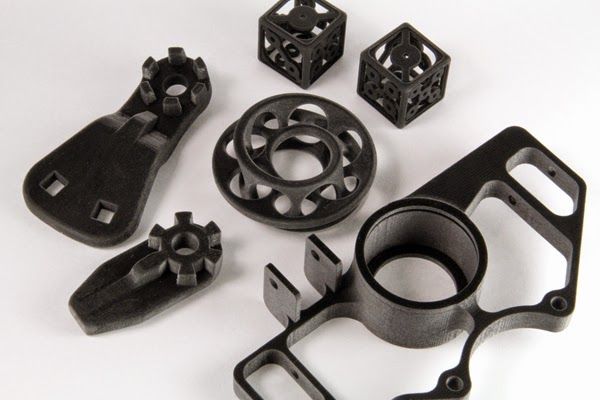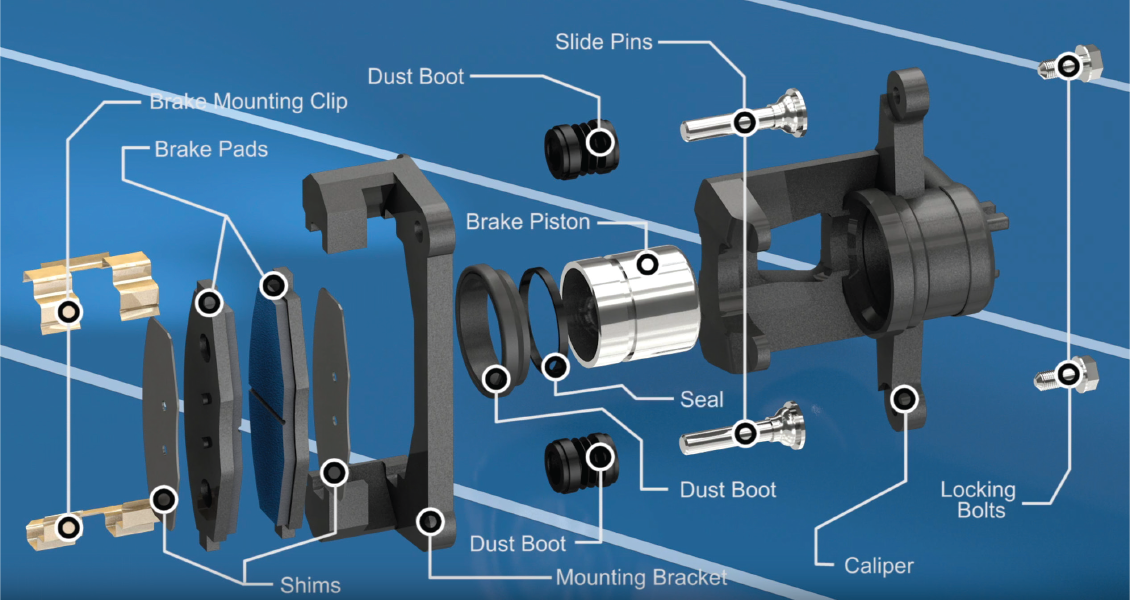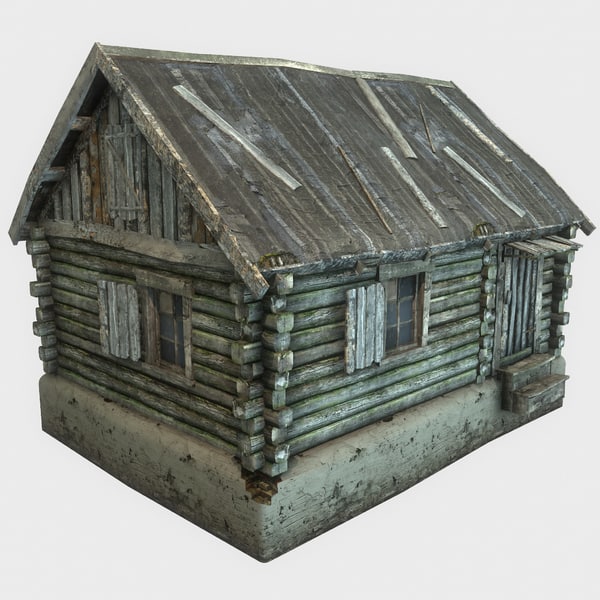3D printing car manufacturing
9 Ways 3D Printing is Changing the Automotive Industry
Although you won’t be able to buy a 3D printed car at the dealership just yet, 3D printing has for many years been a vital part of the development process for automobiles. Recently, however, we’re starting to see 3D printing use cases gain a foothold throughout manufacturing.
3D printing can add enormous value to supply chains, unlocking a broad spectrum of production applications. The technology is growing more workable and affordable, with companies able to bring additive manufacturing in-house to support processes on the factory floor. New, resilient materials are opening opportunities for producing high precision, functional 3D prints that can stand in for final parts and offer (mass) customization opportunities and high performance, but that’s just the beginning.
Read on to find nine key ways 3D printing is powering innovation across the automotive industry, from design to manufacturing and beyond.
Prototyping has historically been the most common use case for 3D printing in the automotive industry. Thanks to the vastly increased speed at which prototyping can be carried out using 3D printing, rapid prototyping has become virtually synonymous with 3D printing, and the technology has revolutionized the product development process.
With 3D printing, automotive designers can quickly fabricate a prototype of a physical part or assembly, from a simple interior element to a dashboard or even a scale model of an entire car. Rapid prototyping enables companies to turn ideas into convincing proofs of concept. These concepts can then be advanced to high-fidelity prototypes that closely match the end result, and ultimately guide products through a series of validation stages toward mass production.
Prototyping used to be time-consuming and expensive as a product goes through many iterations. With 3D printing, highly convincing, representative, and functional prototypes can be created within a day, at a much lower cost than with traditional manufacturing methods. Desktop 3D printers allow engineering and design teams to bring the technology in-house in order to increase iteration cycles and shorten the distance between idea and final product, strengthening their overall product development workflows.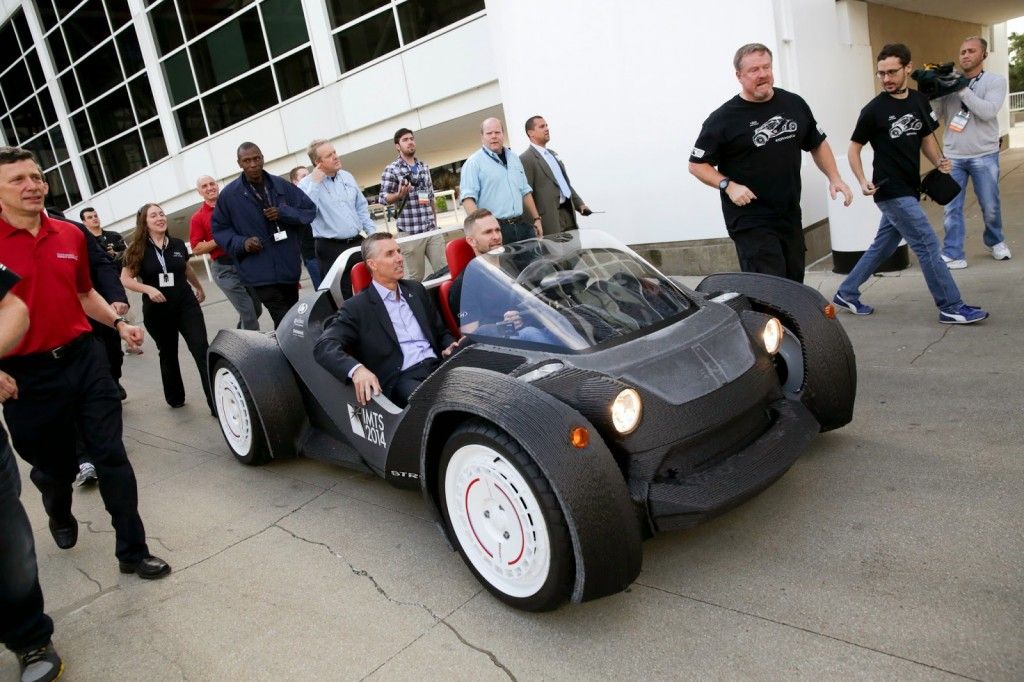
Ford designers used Formlabs 3D printers to prototype the lettering on the back of the Ford Puma in a matter of hours.
At Ford’s Rapid Technology Center in Merkenich, Germany, many 3D printing technologies are used to create prototypes with short turnaround times. Instead of sending out a job to a shop with a several-week lead time, engineers and designers are able to hold their designs in their hands in a matter of hours.
Designers are able to produce same-day prototypes in the Rapid Technology Center, iterating several designs in just a few hours. Physical prototypes can offer advantages over digital models, says Bruno Alves, additive manufacturing expert at Ford.
For instance, Formlabs 3D printers were used to prototype the lettering on the back of the Ford Puma, allowing designers to see how the lines and shadows would appear in different lighting conditions. “The printer is so fast, and so effective for this kind of lettering, that we could supply the designers the option to iterate,” says Alves. “It’s a thing that you can see it in CATIA or other software, you can simulate lighting, but it’s different to feel, to touch, and to see all the reflections when you put the lettering on the car.”
“It’s a thing that you can see it in CATIA or other software, you can simulate lighting, but it’s different to feel, to touch, and to see all the reflections when you put the lettering on the car.”
For more insight on how 3D printing is powering innovation at automotive giants, watch our webinar with Bruno Alves of Ford Motor Co. and Christian Kleylein of Brose.
WEBINAR
In this webinar, Christian Kleylein, Technologist at Brose, one of the largest family-owned Tier 1 automotive suppliers, and Bruno Alves, Additive Manufacturing Expert at Ford will share how 3D printing is powering innovation across the automotive industry, from design to manufacturing and beyond.
Watch the Webinar Now
IGESTEK is an automotive supplier in Spain specializing in the development of lightweight solutions using plastics and composite materials. Their team uses 3D printing throughout the product development process, from the conceptual design phase to verify geometries to the detailed design phase for the realization of functional prototypes. They also use 3D printing to manufacture rapid tooling, such as inserts for plastic injection molds or thermoforming tools for composites.
They also use 3D printing to manufacture rapid tooling, such as inserts for plastic injection molds or thermoforming tools for composites.
Topology optimization is a hot topic in lightweighting. IGESTEK uses Autodesk Fusion 360 to generate multiple solutions based on a list of parameters.
For one suspension mount, the team developed a multi-material architecture that combines metal 3D printing based on generative geometries and lighter composite materials to offer the best performance, in a 40% lighter package than current solutions on the market. These parts were prototyped on the Form 3L, which is large enough to prototype multiple designs simultaneously for even faster iteration and testing.
For more details on this application, plus two other ways IGESTEK lightweights automotive parts, read our story with IGESTEK.
Webinar
In this webinar, Formlabs Product Marketing Lead Jennifer Milne will provide a simple overview explaining what generative design is, framed in a way that is applicable to mechanical part design, including a step-by-step tutorial of Fusion 360 where she’ll produce a lightweight bracket.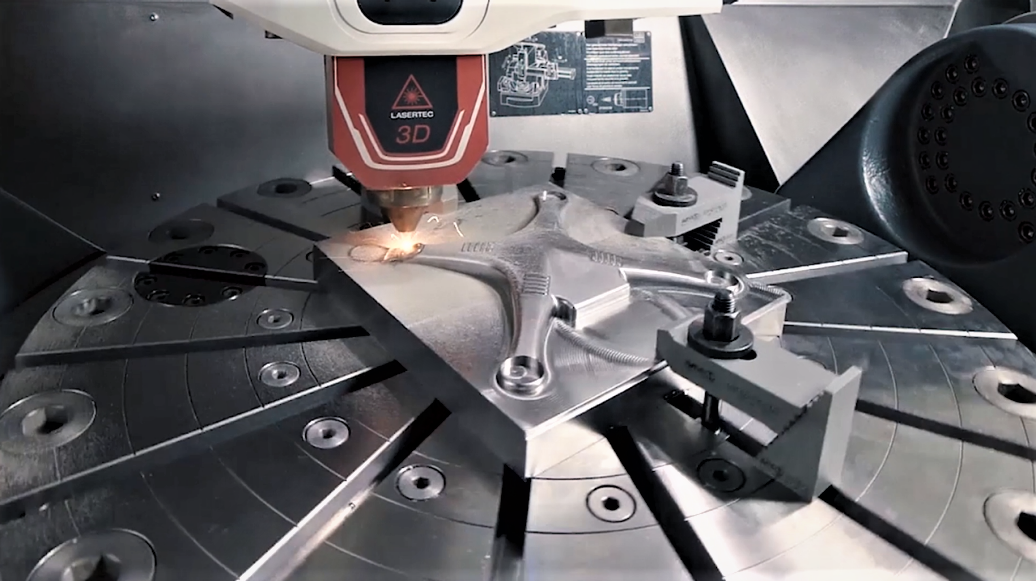
Watch the Webinar Now
Vital Auto is an industrial design studio in the UK that works with major car brands, such as Volvo, Nissan, Lotus, McLaren, Geely, TATA, and more. When the original equipment manufacturers (OEMs) don't have time for experimentation themselves, they come to Vital to turn ideas, initial sketches, drawings, or technical specifications into a fully realized physical form.
“We've used 3D printing from day one. We wanted to introduce it to our manufacturing processes, not only to reduce costs, but to give the customer more diversity with their designs and their ideas,” said Anthony Barnicott, Design Engineer in charge of additive manufacturing.
Today, Barnicott runs a whole 3D printing department, including 14 large-format fused deposition modeling (FDM) printers, three Formlabs Form 3L large-format stereolithography (SLA) 3D printers, and five Fuse 1 selective laser sintering (SLS) 3D printers. “In terms of capacity, all those printers have run 100%, 24/7, pretty much since day one. We use these printers for all areas of our concepts and designs. Typically, we use the Fuse 1s for our production-based parts and we use our Form 3Ls for our concept-based parts,” said Barnicott.
We use these printers for all areas of our concepts and designs. Typically, we use the Fuse 1s for our production-based parts and we use our Form 3Ls for our concept-based parts,” said Barnicott.
3D printing not only helps the team create better products faster, but also attracts new business. They found that many of their customers turn to them because they want to have access to the latest technologies and they want to have their components made using the latest cutting-edge materials.
“The progression in technology and 3D printing over the last 10 years is phenomenal. When I first started, producing low volume, niche vehicles, some of the products that we produce today would simply have been inaccessible. And not only am I able to produce these parts today, but I’m also able to produce them very cost-effectively, very quickly,” said Barnicott.
For more insights on specific applications with 3D printed parts, check out our in-depth story with the Vital Auto team.
White Paper
In this guide, you’ll learn how rapid prototyping fits into the product development process, its applications, and what rapid prototyping tools are available to today’s product development teams.
Download the White Paper
Thanks to the rapid development of 3D printers and high-performance materials, additive manufacturing can now be used to produce parts that are up to the challenge of extreme environments.
3D printing can be leveraged in manufacturing to reduce overhead and increase efficiency with manufacturing aids like custom jigs and fixtures and produce low-volume rapid tooling for traditional manufacturing processes like injection molding or thermoforming.
3D printed end-use parts are also increasingly common in the automotive industry, especially for applications like aftermarket, custom, or replacement parts, where other means of production would be excessively costly and slow.
Makra Pro developed a novel technique for molding leather trim pieces using 3D printed dies.
Makra Pro is an additive manufacturing service provider that has developed a novel process for molding leather, a popular trim material in luxury cars that can be difficult to shape, using 3D printed dies.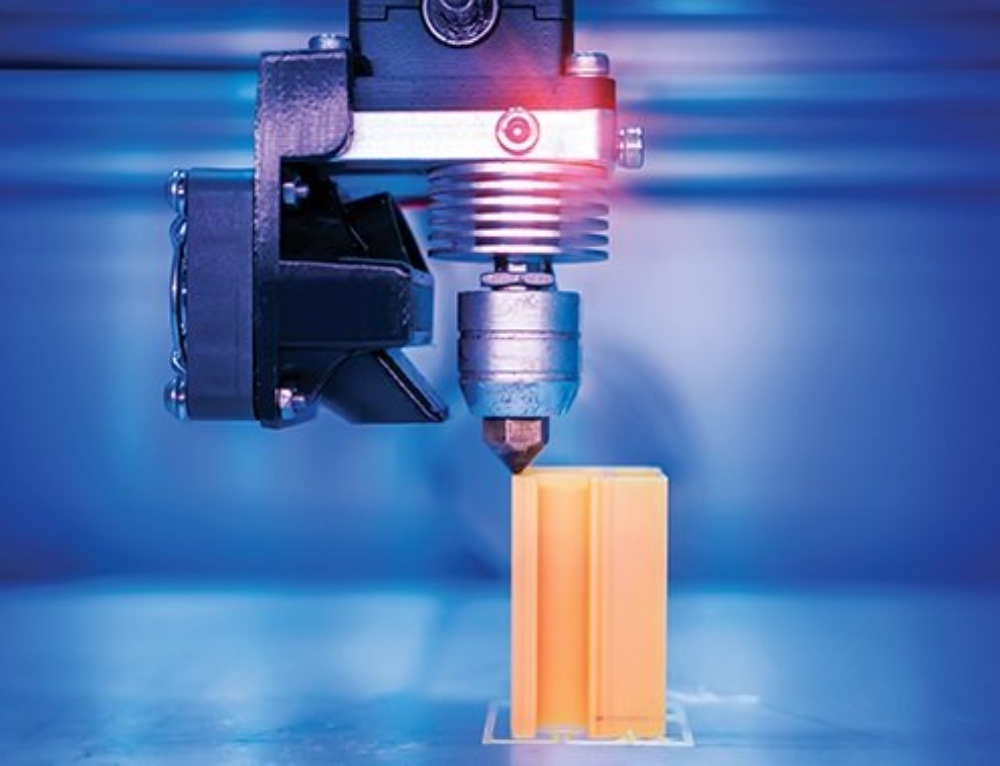 In partnership with some of their clients, including manufacturers of luxury cars, motorcycles, and motor homes, they have tested a method for shaping and embossing real leather.
In partnership with some of their clients, including manufacturers of luxury cars, motorcycles, and motor homes, they have tested a method for shaping and embossing real leather.
Using molds printed on a Form 3, Makra Pro’s technique uses expanding foam to equally distribute pressure across a panel of stretched leather. As the foam hardens, the leather is pressed into the die and takes on its shape.
The finished leather parts can then be, for example, stretched over the door panel in a car or attached to the seat cover in a vehicle. One well-known tuning company of limited-edition luxury automobiles uses these molded leather parts for wall or ceiling panels in vehicle enhancements.
Read our in-depth story with Makra Pro or download our white paper for more rapid tooling applications, including injection molding, thermoforming, and more.
White Paper
In this white paper, learn how to combine rapid tooling with traditional manufacturing processes like injection molding, thermoforming, or casting.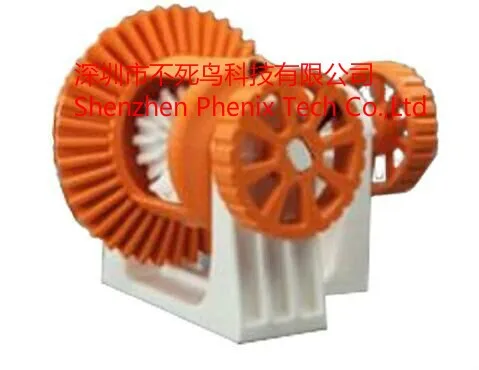
Read the White Paper
Dorman Products produces go/no-go test jigs with Grey Resin that are accurate to +/- 0.05 mm.
Dorman Products designs and manages a database of more than 100,000 parts for hundreds of different vehicles. “Historically we’ve released between 4,000 and 5,000 new parts each year,” says Mechanical Design Team Manager Eric Tryson.
In addition to the sheer logistical challenge of operating as an aftermarket supplier, Dorman’s product design and manufacturing teams need to be particularly agile, says Additive Manufacturing Lead Chris Allebach. “The OEMs have teams of people designing a single part, sometimes starting two years prior to a new car coming out. We need to find ways to ensure our replacements are reliable while also being fast to market.”
Before integrating 3D printers into their workflow, the lack of custom test fixturing was an obstacle to quick development. Machining was prohibitively expensive and time-consuming.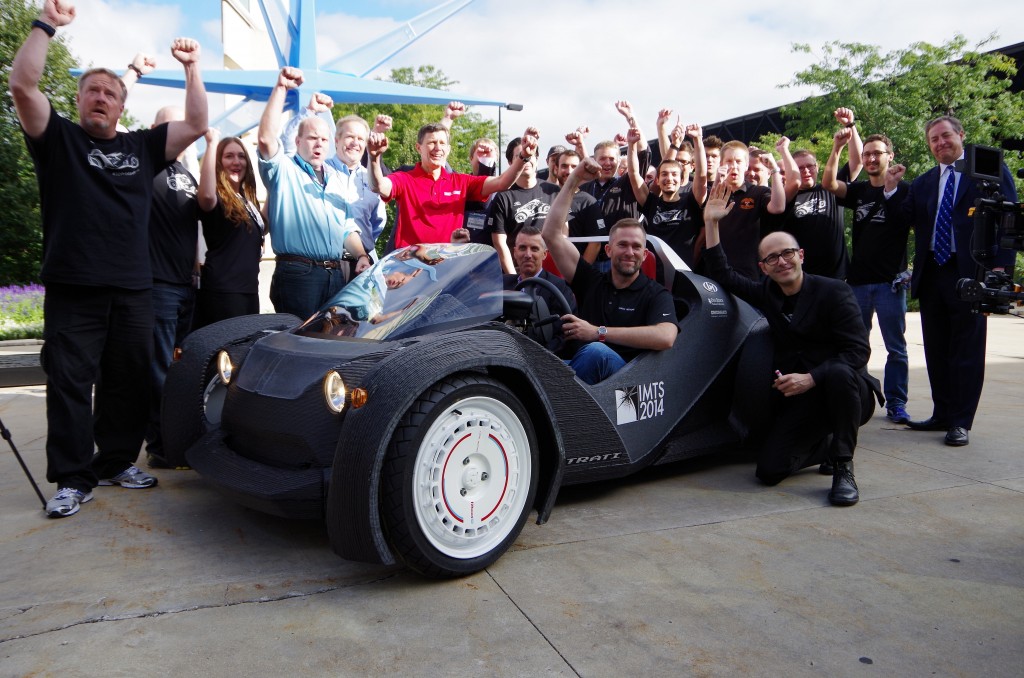
“Now, with the 3D printers, we develop the test fixtures and gauges along with prototyping the product, so when we decide on a final design, we can have the fixture to test it as well. We’re trying to be as proactive as possible,” says Allebach.
Since Dorman acquired their first 3D printer ten years ago, Allebach and Tryson have added more printers steadily, continually maxing out capacity on their existing units, and utilizing the full materials library on their Formlabs SLA printers, including a large-format Form 3L.
“[Our first 3D printer] paid for itself within two months. When we’re doing the cost justification or an ROI for any of the Formlabs printers, we can justify the payoff in months instead of a two-year time frame. That gives our leadership confidence that 3D printing is a worthwhile investment,” says Tryson.
Dorman Products is using 3D printing for several other applications. Read our article to explore them.
White Paper
For manufacturers, maximizing production speed while maintaining high part quality is critical for success. Jigs and fixtures are used to make manufacturing and assembly processes simpler, more reliable, and more efficient, reducing cycle times and at the same time improving worker safety.
Jigs and fixtures are used to make manufacturing and assembly processes simpler, more reliable, and more efficient, reducing cycle times and at the same time improving worker safety.
Download the White Paper
BTI Gauges designs telemetry displays for high-performance cars.
Like many successful businesses, BTI Gauges started with a gap in the market. Brandon Talkmitt, founder and owner, was looking for a customizable approach to telemetry display for his high-performance car.
Talkmitt searched, unsuccessfully, for a gauge that contained multiple performance metrics, so his windshield wasn’t littered with multiple screens and distracting read-outs. He then began by prototyping the external casings of the gauges on a 3D printer and testing them out himself, subjecting the casings to high-heat environments inside cars and ovens, and modifying the design to complement multiple car models.
Right away, there was interest in his product from clientele driving 1990’s style Japanese race cars, Lamborghinis, Dodge Vipers, and other high-performance vehicles.
Talkmitt began evaluating other 3D printing options, including expensive plastic powder bed fusion 3D printers, resin 3D printers, and an inexpensive compact SLS option. But between the half a million dollar price tags on some, and the complex materials purchasing process from others, there just weren’t any options available. That is until he heard about the Fuse 1. “When I got the sample I thought, ‘Man, if my parts can look like this.’ So I ran some tests, and figured out what kind of heat it could tolerate. Did the finishing and painting process on it, and everything worked,” says Talkmitt.
During the supply chain issues of the last two years, BTI Gauges faced several shortages of the touchscreen displays, and other components needed for their nine product lines. By bringing 3D printing in-house with the Fuse 1, he was able to pivot immediately to a new design, without having to spend thousands of dollars on new tooling, or dealing with a backlog of now-obsolete products.
“I would have been stuck with all that plastic, but with the Fuse 1, I could make the change on the fly. It was a 30-minute thing for me to change the files. Without it, I would definitely be stuck right now,” says Talkmitt.
Find out more about producing end-use aftermarket parts in our in-depth story with BTI Gauges.
White Paper
In this white paper, we evaluate the value proposition of bringing SLS 3D printers in-house, in comparison with outsourcing SLS parts from a service bureau.
Download the White Paper
3D printing is a toolless fabrication process that is a great match for motorsports and a powerful tool to achieve low-volume production and custom manufacturing rapidly and cost-efficiently. By eliminating tooling time and costs, it provides the flexibility to revise products quickly and accelerate time to market. It increases design freedom and gives the ability to customize products, and build complex shapes such as lattices without any additional costs.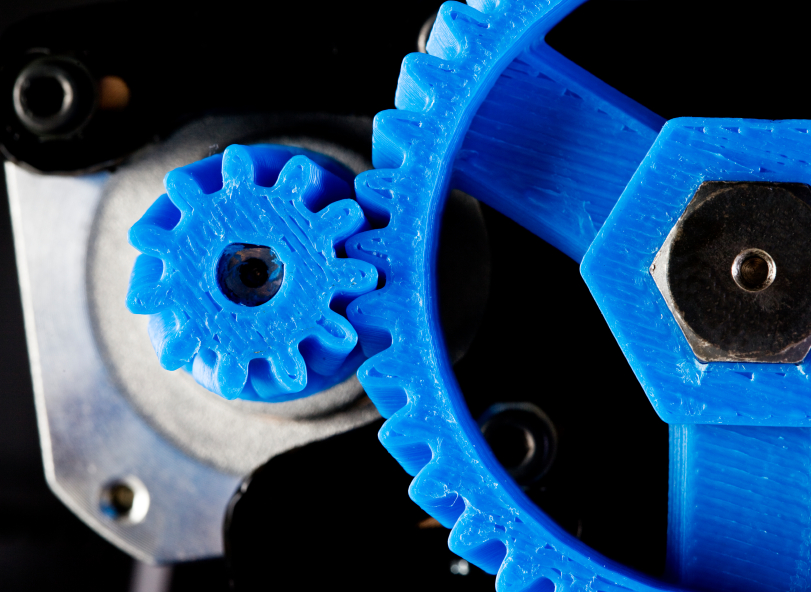
By using in house 3D printing, motorsport teams can develop faster, keep their IP secure, test more ideas, and ultimately beat their competition.
Forge Motorsport’s redesigned duct reduced intake air temperature by 6° C.
Forge Motorsport, which makes aftermarket parts for performance cars, uses 3D printing to prototype their parts. When the Toyota Yaris GR was released, the engineers at Forge noticed a few opportunities to improve the inlet duct design—moving the airbox opening, and increasing the overall size of the part—that would reduce fluctuations in intake air temperature (IAT), which make it hard to anticipate engine performance, while reducing the average temperature overall.
They reverse engineered the OEM part using 3D scanning and made the design changes virtually in SOLIDWORKS, where they were able to simulate airflow. Once they had a workable 3D model, they prototyped it in fast-printing Draft Resin, which they used to confirm that the new location for the airbox opening would work as intended and that the overall increased size of the part wouldn’t interfere with other components or cables.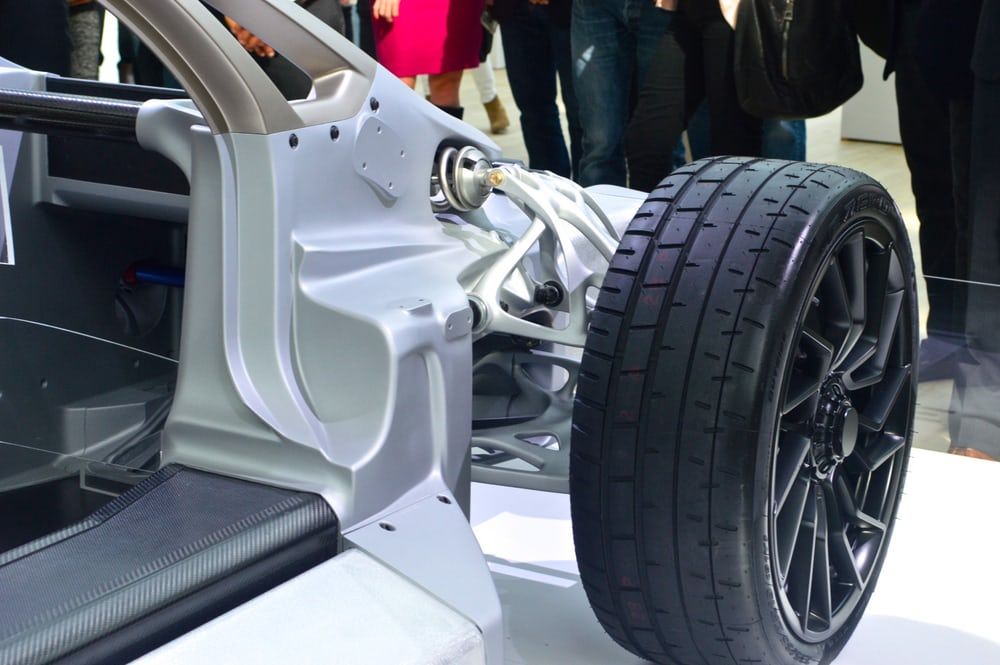 With basic fit confirmed, they reprinted the part in Tough 1500 Resin, a strong and impact-resistant material, painted it black to resemble the final part, and gave it to a customer to test.
With basic fit confirmed, they reprinted the part in Tough 1500 Resin, a strong and impact-resistant material, painted it black to resemble the final part, and gave it to a customer to test.
The customer used the 3D printed part in his Yaris GR for five months, during which time he collected data on performance under different conditions, including on tracks and uphill climbs. The IAT on the stock part varied between 42-45 °C, with considerable variations observed during the course of a race; with the redesigned part, printed in Tough 1500 Resin, the customer measured IATs between 35-36 °C. As anticipated, the redesigned part had both lower overall IATs and reduced fluctuations. With this data in hand, confident that their part was an improvement over the OEM design, Forge moved forward into manufacturing the final production part with carbon fiber.
For more on the reverse engineering workflow using 3D scanning, watch our webinar with Forge Motorsport and Peel3D.
WEBINAR
In this webinar brought to you by Formlabs, Solid Print3D, and peel 3d, we talk to Forge Motorsport, who manufacture performance upgrades for the aftermarket automotive industry such as valves, intercoolers, and actuators.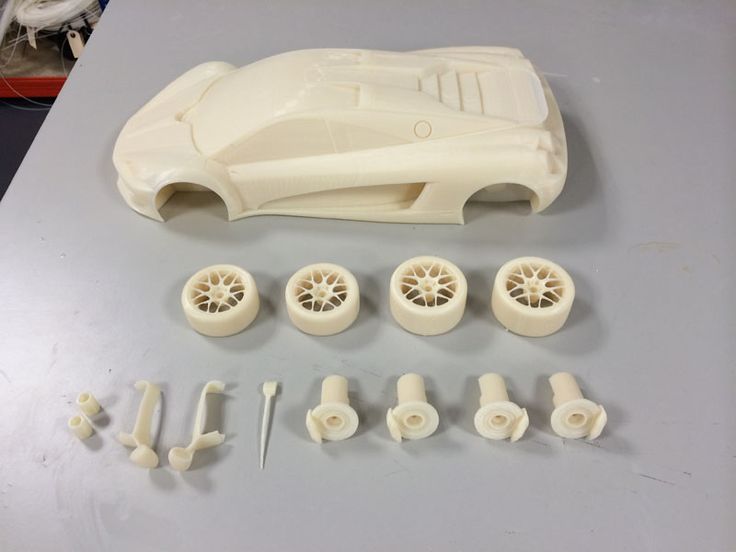
Watch the Webinar Now
By 3D printing molds in-house, TU Berlin’s competition team could drastically cut their costs and lead time for this carbon fiber part.
The Formula Student is a yearly engineering design competition in which student teams from around the world build and race formula-style cars. The Formula Student Team TU Berlin (FaSTTUBe) is one of the largest groups; 80 to 90 students have been developing new racing cars every year since 2005. The team added a Form 3 SLA 3D printer to their toolset that they have used to save time, reduce costs, and create carbon fiber parts that would be prohibitively expensive any other way.
3D printing molds for composites allowed the team much greater flexibility, shorter lead times, and saved costs when designing key parts like the steering wheel chassis. Machining the mold for this part would have required sourcing expensive specialized tools, and outsourcing the molded part would have taken weeks and cost nearly €1000.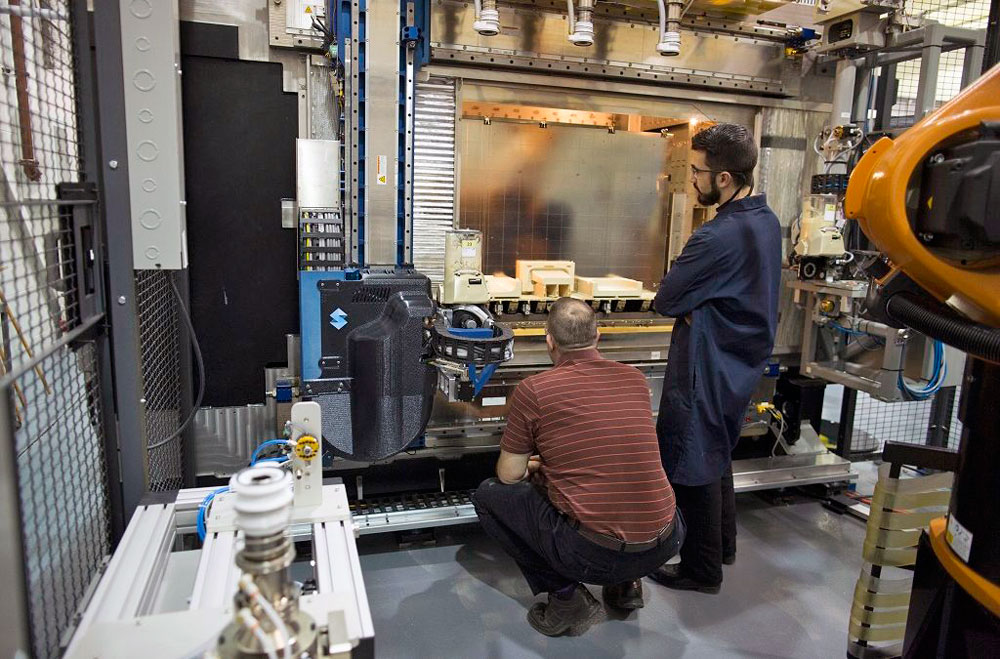 Instead, 3D printing the mold in-house and laminating it by hand cost only €10 in materials and 1.5 hours of working time.
Instead, 3D printing the mold in-house and laminating it by hand cost only €10 in materials and 1.5 hours of working time.
The team is also using 3D printing to prototype designs, lightweight parts, and even fabricate end-use parts. Read our story with them for more details on these applications.
3D printing has given the FaSTTUBe team new flexibility, design freedom, and cost savings. Additionally, students have gained experience fabricating prototypes, tooling, and even end-use parts for their project. These skills will stay with the students as they enter the workforce, bringing valuable experience to every discipline of engineering.
White Paper
Download this white paper for composite mold design guidelines and step-by-step guides to the prepreg and hand laminating methods to create carbon fiber parts.
Download the White Paper
The intake manifold, printed in Rigid 10K Resin, recorded a lower post-race temperature than the original aluminum part.
Andrea Pirazzini has been riding motorcycles since 2012. He wanted to challenge himself to design and fabricate a functional, safe 3D printed intake manifold for his own bike. In the past, he had tried using FDM printing technology, but the result was not what he hoped for, as the part was not airtight and compromised the engine’s function.
To develop the project, Pirazzini used 3D scanning and Autodesk Fusion 360 software to reverse engineer the design. The scan of the four-stroke engine (two-valve) engine with its frame and carburetor helped him to correctly size the manifold and then to position it optimally. With the use of CAD software, it was possible to align the diameter of the head inlet with the carburetor, avoiding steps and any pressure drop or turbulence.
The new manifold design was printed with the Form 3 using the Rigid 10K Resin at a 100 microns layer height, creating a smooth surface without visible layer lines. As for the finish, Pirazzini used classic water-based sandpaper to smooth the surface. Unlike an FDM manifold, which has to be treated externally and internally to be watertight, SLA printing creates solid and waterproof parts.
Unlike an FDM manifold, which has to be treated externally and internally to be watertight, SLA printing creates solid and waterproof parts.
The manifold that Pirazzini printed with the Form 3 has withstood high and low temperatures perfectly and is still mounted on his pit bike. Thanks to the use of a thermal imaging camera, Pirazzini discovered that Rigid 10K Resin also offered a significantly better thermal performance: The 3D printed manifold with cooling fins recorded a 40-50 degrees Celsius lower temperature compared to a classic aluminum manifold. Moreover, after a race of about 20-25 minutes at an outside temperature of about 33 degrees Celsius, it was possible to touch the manifold without getting burned.
The project not only succeeded, but it even improved the function of the engine. Based on some improvements Pirazzini made to the original design, the engine had more horsepower (about one HP, almost 10% increase) available compared to the standard machined manifold, while remaining within the limits imposed by the rules of the championship.
Find out more about how Pirazzini developed the project in our detailed case study.
White Paper
3D scanning and 3D printing workflows can be applied to replication and restoration, reverse engineering, metrology, and more. Download our white paper to explore these applications and learn how to get started.
Download the White Paper
Amid the 3D printing hype of the early 2010s, excitement grew in popular media around 3D printing large-scale, complex assemblies, including entire 3D printed cars. However, even the biggest proponents of “fully” 3D printed cars shifted focus to printing structural and trim components like the chassis, body, and seats, not the engine or other electromechanical assemblies.
Some companies, including Local Motors and EDAG, created full concept cars where the chassis and body were 3D printed, exhibiting them to the public at trade events like SEMA in the mid-2010s. However, none of these projects reached serial production.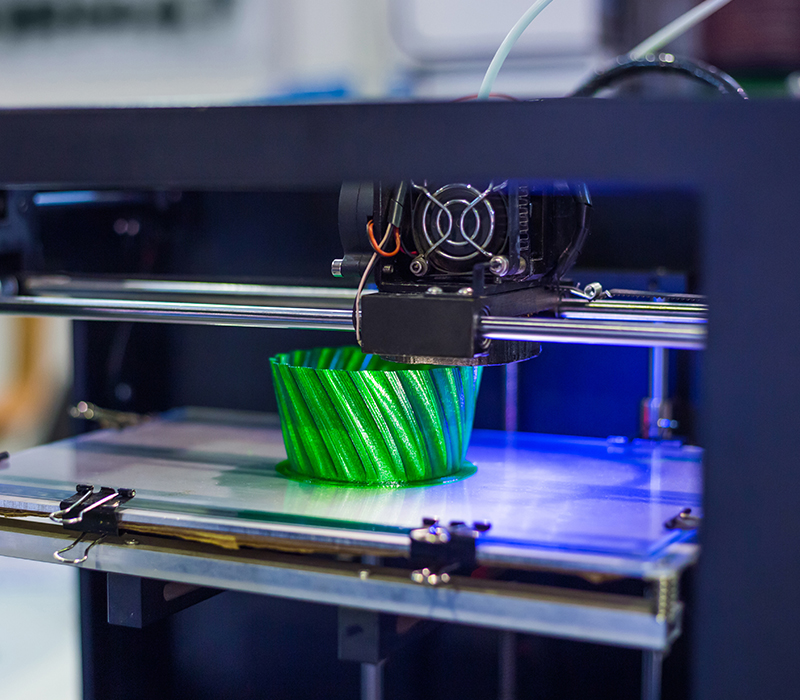
Besides weather resistance, the cover on EDAG’s Light Cocoon provides absolute freedom when it comes to design and individualization. (source: EDAG)
Currently, the projects and companies closest to serial production seem to be Divergent 3D and XEV.
Divergent 3D combines generative design and 3D printing to create custom-tailored components for auto parts manufacturers. Once a component is designed, it’s constructed using the company’s metal 3D printers. Their first public project is the Czinger 21C hypercar, while they’re also a supplier of major OEMs, including Aston Martin.
On the other end of the spectrum, the YoYo, developed by the Italian company XEV, might be the first “mass market” 3D printed electric car that is now shipping to customers. Apart from the chassis, the seats, and the windshield, all the visible parts of the YoYo are also 3D printed. Thanks to the extensive use of 3D printing, the company has managed to reduce the number of components from 2,000 to only 57, resulting in a light design that weighs only 450 kilos.
The YoYo is the first “mass market” 3D printed electric car that is now shipping to customers.
As we have seen through all these examples, 3D printing has already been proven repeatedly to offer significant advantages to the supplier, the OEM, and the consumer when it’s leveraged creatively to reduce time to market and improve vehicle performance. In some cases, 3D printing technology is pushing boundaries and helping achieve entirely new possibilities in design and production. In others, the technology is lowering production costs and saving time.
As the understanding of the value and realities of 3D printing continues to spread through the industry, and as the technology and available material base grow ever more versatile, additive technology will continue to reshape the way we design, build, and maintain vehicles around the world.
Learn About 3D Printing for Automotive & Transportation
How is 3D printing used in the automotive industry?
For the past few decades, 3D printing in the automotive industry was primarily used by carmakers to create automotive prototypes to check their form and fit. Is it still so today? What are the other applications of the 3D printing technologies that could benefit the industry?
Is it still so today? What are the other applications of the 3D printing technologies that could benefit the industry?
Quick navigation
- Impact of 3D printing in the automotive industry
- Core applications of additive manufacturing (AM) in the automotive industry
- Advantages of 3D printing in the automotive industry
- 3D printing software in the automotive industry
Electric cars and self-driving cars have already become a part of our lives, as well as cloud-to-car mapping systems and driver behavior monitoring systems which are valued by drivers and insurance companies alike. The dynamic economic environment and more and more demanding consumers are making automakers look for new opportunities and materials to catch up with other industries. This is an environment where necessity breeds innovation.
Deloitte University experts recently shared how additive manufacturing (AM) technologies, commonly known as 3D printing, and their advances “have transformed the potential ways in which products are designed, developed, manufactured, and distributed”.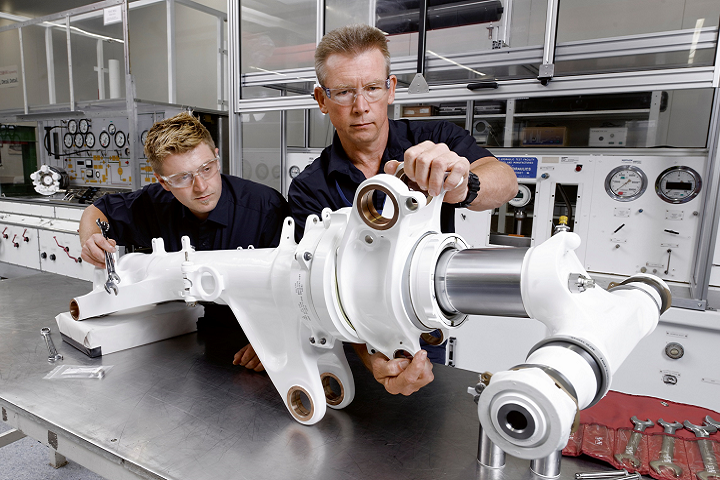
Impact of 3D printing in the automotive industry
For the past few decades, 3D printing in the automotive industry was primarily used by carmakers to create automotive prototypes to check their form and fit. The first technology for building parts was selective laser sintering or binder jetting. This allowed automakers to create aesthetically pleasant parts, but they were weak and could not be used long.
According to engineering.com, today there are more robust technologies for automotive 3D printing, such as fused filament fabrication (FFF), which can be used not only for the production of prototypes but also for end-use parts.
3D printing for automotive parts can be a game-changer in the industry. The Global Automotive Outlook 2017 projects that “the global automotive industry is set to reach 114 million in worldwide sales annually by 2024”. This market has very high barriers of entry as it is dominated by just a few OEMs.
The parts and accessories market looks different. There are a lot of large scale and smaller players and the competition there is very high. It is projected that this market will reach around US$ 17 Bn by the end of 2025.
There are a lot of large scale and smaller players and the competition there is very high. It is projected that this market will reach around US$ 17 Bn by the end of 2025.
And, last but not least, according to Machine Design, consumption of 3D printing materials by the automotive industry will reach around $530 million by 2021.
Core applications of additive manufacturing (AM) in the automotive industry
| Design and concept of communication | High detail, smooth and accurate 3D printed scale models are very often used in the automotive industry to demonstrate designs and concepts of new vehicles. The reason is simple – using CAD models alone is not effective enough to define possible design problems. Such models are also used for the aerodynamic testing of new models. |
| Prototyping validation | Like in many other industries, prototyping is a very important part of the manufacturing process in the automotive sector.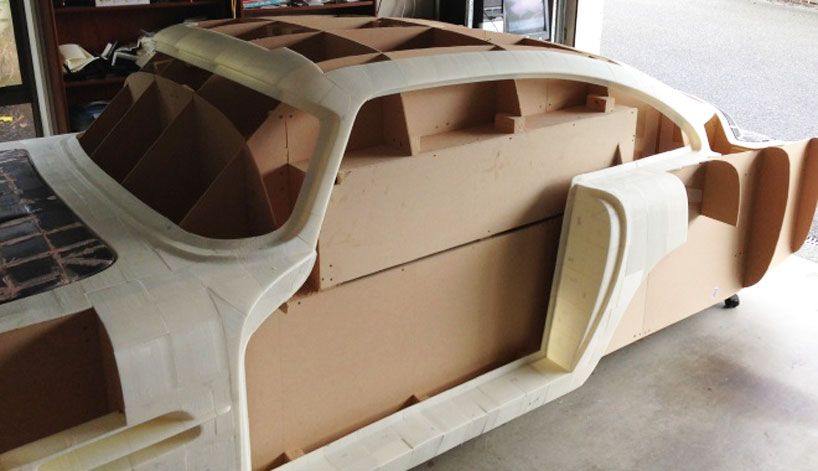 3D printing allows for rapid prototyping in the pre-manufacturing stage. Using AM now is one of the most popular ways to validate a prototype – from a small quickly printed detail to a high detail full-scale part suitable for performance validation and testing. 3D printing allows for rapid prototyping in the pre-manufacturing stage. Using AM now is one of the most popular ways to validate a prototype – from a small quickly printed detail to a high detail full-scale part suitable for performance validation and testing. |
| Preproduction sampling and tooling | The specialists of 3D hubs regard this application as the most promising. 3D printing can be used to make molds and thermoforming tools, rapid manufacturing of grips, jigs, and fixtures. This allows automakers to produce samples and tools at low costs and to eliminate future losses in production when investing in high-cost tooling. |
| Customized parts | Additive manufacturing is used by automotive enterprises to tailor the parts to specific vehicles (making them custom and lightweight) or even drivers (e.g. seats for racing cars). This is especially useful when the cost of such unique components is justified by a substantial improvement in vehicle performance. |
As we see, 3D printing can be a key to car model evaluation and cost-saving for automakers. What else can it do for this industry?
Advantages of 3D printing in the automotive industry
Printing solutions for the automotive industry provide benefits that can be easily evaluated in terms of performance characteristics. 3D printing can replace expensive and long lead-time CNC production. 3D printed plastic parts are cheaper and their production time in-house is shorter. And this means reductions in production costs, especially when dealing with the manufacturing of complex bodies.
In-house 3D prototyping can also help to control Intellectual Property (IP) infringements or information leaks as everything is produced on-site. 3D prototyping can also significantly reduce turnaround times across all stages of manufacturing allowing more agility. Unlike traditional approaches to vehicle design (this refers both to cars and trucks) where a variety of materials are used, 3D printing in automotive design allows lower consumption of materials and wastage which is beneficial for all stages of manufacturing.
3D printer assisted design in the automotive industry allows designers to try multiple options of the same detail and iterations during the stages of new model development. It brings more flexibility, which results in efficient designs and flexibility in making changes in design throughout the process of model evaluation. This, in turn, helps auto manufacturers stay up to date with market needs and be ahead of the field.
By now, we’ve found out the possibilities and advantages of 3D printing in the automotive industry. But, let’s keep in mind that there are two components of this advantage – 3D printers and software for 3D printing. So what does it look like and how can a company build 3D printing software for the automotive industry?
3D printing software in the automotive industry
3D printing allows for more efficient car model design, prototyping, testing and production using industrial 3D printing software. This software enables designers to create printable designs which are the first crucial step in creating 3D printed automobile parts, and the core of the printing process.
To use all the capabilities of a 3D printer, you need to have 3D printer control software and 3D editors that allow the equipment to perform specific tasks. All the software must comply with certain standards, i.e. it must “grasp” various formats of necessary data input.
As a rule 3D printer software uses:
- STL language (to describe the surface of the set model triangles are used)
- X3D language (the count starts from the preset profile, it is built on XML standard)
- VRML standard (based on triangles that do not have common points)
Before we turn to the off-the-shelf solutions overview, let us point out that custom-built 3D printing software and particularly 3D printing workflow management software is an efficient tool to produce complex 3D components for the automotive industry, both for large OEMs and small companies manufacturing custom cars.
3D printing managed by a software that answers your own specific needs rather than the average of the whole industry can lead to more significant cost savings (personnel costs, assembly costs, inventory costs, etc. ) and a substantial decrease in production time. 3D printing software can automate the production process and ensure lean manufacturing.
) and a substantial decrease in production time. 3D printing software can automate the production process and ensure lean manufacturing.
According to nanalyse.com, the key 3D printing management players existing in this market, which in fact is not overcrowded, are:
- Autodesk
With its market cap of $16.66 billion, this software package offers a couple of products valued by the 3D industry: Netfabb (a software for preparing files for 3D printing) and Project Dreamcatcher (a design program).
Netfabb allows the conversion of 3D models into more complex geometries (for example, lattice-filled shapes) which makes them more lightweight while maintaining structural integrity. Dreamcatcher can generate dozens of geometrically complex versions of a solid shape allowing the selection of shapes that would fit a certain application best.
- Materialize
With its market cap of $346 million and working with the majority of players in the 3D printing market. This company provides 3D printer manufacturers with print drivers (Build Processor) and a #D printing software suite for managing the overall printing process from model preparation to robotics automation.
This company provides 3D printer manufacturers with print drivers (Build Processor) and a #D printing software suite for managing the overall printing process from model preparation to robotics automation.
- Stratasys
With a market cap of $1.132 billion it is also a well-known additive manufacturing market player which specializes in automotive applications. This company provides CAD solutions for manufacturing, prototyping, tooling, and production and maintains its own online community for professional designers, engineers, manufacturers, and students.
- SolidWorks by Dassault Systemes
With a market cap of $20.2 billion it is a 3D CAD software for designing parts and assemblies. SolidWorks product development solutions integrate 3D design with simulation, offering automakers the ability to make parts faster and cheaper.
- Siemens
Holding a market cap of $87.34 billion it also has some CAD tools for 3D printing, such as Siemens SolidEdge and NX. SolidEdge parametric solid modeling software is intended to design individual components and assemblies. NX is used by the automotive industry to create entire environments, i.e. to design parts and to simulate the part behavior, analyze the elements and prepare them for manufacturing.
SolidEdge parametric solid modeling software is intended to design individual components and assemblies. NX is used by the automotive industry to create entire environments, i.e. to design parts and to simulate the part behavior, analyze the elements and prepare them for manufacturing.
- PTC
Having a market cap of $5.49 billion also offers mid-level 3D CAD software and solutions intended for parts design, such as Creo software for parametric CAD modeling. Though this company is much smaller than the “monsters” of the industry, PTC is among the four leading developers of CAD software.
In addition, it should be mentioned that there are a handful of successful startups and small software developing companies that offer paid and open-source 3D CAD products.
Contact our team at [email protected] for more information.
5 ways 3D printing is changing the automotive industry / Sudo Null IT News
You can't buy a fully 3D printed car in a car dealership yet, but additive technologies have been used in car design for many years. Every year, especially in recent years, 3D printing is taking an increasingly important place at all stages of production. This is evidenced by the rapid growth of 3D printing market share in automotive manufacturing, which is projected to reach $2.5 billion by 2023.
Every year, especially in recent years, 3D printing is taking an increasingly important place at all stages of production. This is evidenced by the rapid growth of 3D printing market share in automotive manufacturing, which is projected to reach $2.5 billion by 2023.
For example, luxury car companies including Bentley, Porsche, BMW and Ferrari are using 3D printing to create custom car interior parts. GM, Volvo, Ford are using 3D printing to produce tooling to save money, improve designs and reduce delivery times. 3dprinting.com If the first 3D printers cost about $20,000, now you can find 3D equipment for $100. Now companies can, with the help of additive technologies, produce the necessary components directly at their own enterprises and not depend on suppliers.
With new materials, 3D printers can print high-precision, functional end parts. Additive technologies facilitate the production of custom products and increase productivity.
But this is only the beginning of the journey. Here are five key ways 3D printing is driving innovation in the automotive industry, from car design to production. Plus one bonus.
Here are five key ways 3D printing is driving innovation in the automotive industry, from car design to production. Plus one bonus.
1. Changing the prototyping process
It was with the manufacture of prototypes that the use of 3D printers in the automotive industry began. 3D printed prototypes took much less time than traditional methods required.
Using Raise3D 3D printers and ideaMaker software, Crazy Grandpa Garage was able to automate the process of creating custom car parts. Production costs have been reduced by 50%, design reliability has improved significantly, and lead time has been reduced by 83%. The parts now come out very well fitted to the car.
Source: facebook.com
Using 3D printing, car designers can quickly prototype individual parts or assemblies, from interior detail to dashboard, or even full-size car models. Thanks to 3D prototyping, the initial idea quickly turns into a physical embodiment of the concept - a conceptual model. The concept can then be developed into full-featured, high-fidelity prototypes, and after several validation steps, mass production begins. For the automotive industry, getting through these steps quickly is vital, and the entire downtime of an automobile production line in just an hour is very costly for the company.
The concept can then be developed into full-featured, high-fidelity prototypes, and after several validation steps, mass production begins. For the automotive industry, getting through these steps quickly is vital, and the entire downtime of an automobile production line in just an hour is very costly for the company.
For example, the assembly plant of the US car manufacturer General Motors claims to have saved more than $300,000 by purchasing a 3D printer in 2016.
Ringbrothers designers and engineers are not dependent on third parties to implement laser stereolithography (SLA) in their facility. The cost is reduced, the development time is reduced. Source: formlabs.com
Hose for Eventuri BMW M4, Source: ultimaker.com
Traditional prototyping was time-consuming and costly, in part because the product went through more iterations. With 3D printing, you can create high-quality prototypes in one day and at a much lower cost.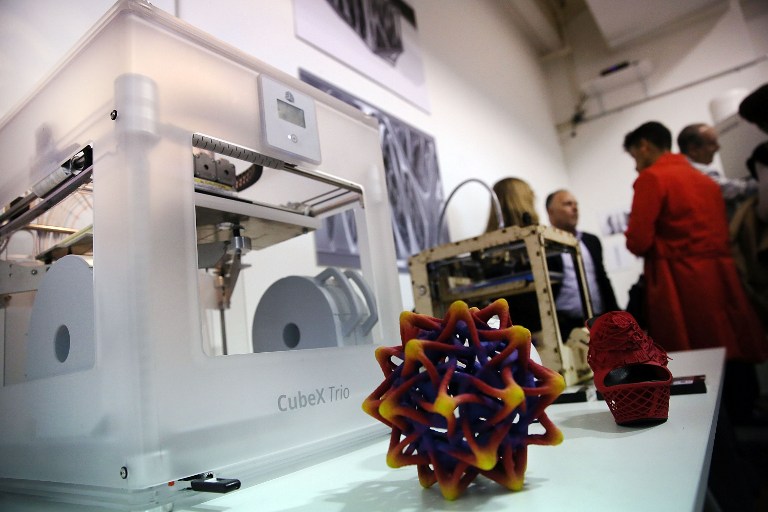 More examples.
More examples.
The Ford Fiesta ST with 3D printed parts, ext. SEMA 2016, ultimaker.com
For example, General Motors has partnered with Autodesk to produce low cost, lightweight automotive parts using 3D printers. Tools, fixtures and fittings can now be produced at a fraction of the cost, according to Autodesk. For example, a 3D printed tool used to align engine and transmission ID numbers costs less than $3 at General Motors. A traditionally produced instrument will cost $3,000. In addition, downtime due to faulty tools can be significantly reduced as new tools are produced in-house.
2. Creation of non-standard and complex parts
Daihatsu, Japan's oldest car manufacturer, launched a project in 2016 to customize its Copen model.
Source: 3dprint.com
In partnership with Stratasys, Daihatsu customers can design and order custom 3D printed panels for their front and rear bumpers with a choice of over 15 basic patterns in 10 different colors.
Source: 3dprint.com
In Europe, the BMW MINI brand also uses 3D printing to create personalized car parts. Since the beginning of 2018, MINI customers have been able to personalize various trim elements such as the instrument panel, LED treadplates and illuminated bumpers, as well as choose from different colors and textures. These parts are then 3D printed using a range of technologies from DLS Carbon to SLS.
Source: formlabs.com
Volkswagen Motorsport's I.D. R Pikes Peak is designed with over 2000 3D printed test parts.
Source amfg.ai
The use of 3D printers makes it possible to experiment in the development of non-standard designs, reduces the cost of their production. Long production processes for custom-made products are becoming much shorter.
Ringbrothers uses 3D printing to create customized end pieces such as ventilation grilles. Source: formlabs.com
Large companies are merging 3D printing technologies with traditional manufacturing methods. Volkswagen has recreated its iconic 1962 Microbus by replacing the petrol engine with a 120 hp electric one. The Type 20 concept electric minivan has received many improvements using 3D printed parts. These improvements include cast aluminum wheels. Even the wheel hubcaps, while looking like stamped steel, are actually printed on a Formlabs SLA 3D printer, then electroplated and polished.
Volkswagen has recreated its iconic 1962 Microbus by replacing the petrol engine with a 120 hp electric one. The Type 20 concept electric minivan has received many improvements using 3D printed parts. These improvements include cast aluminum wheels. Even the wheel hubcaps, while looking like stamped steel, are actually printed on a Formlabs SLA 3D printer, then electroplated and polished.
Source: formlabs.com
Formlabs Form 2 SLA 3D printer specifications
Bentley has used cutting-edge metal 3D printer technology to produce a grille, side vents, door handles and exhaust pipes much more complex than those used on current production models.
Bentley used metal 3D printing to create intricate micron precision parts. Source: formlabs.com
Source: youtube.com
3D printing has also made it possible to create parts that could not be made in any other way.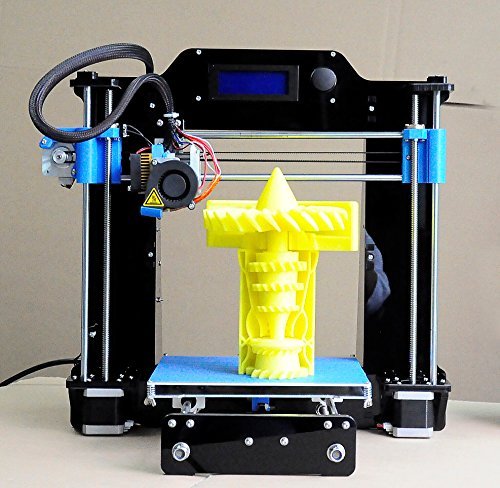
Bugatti's monobloc brake caliper is a prime example. For some components, Bugatti would have preferred titanium due to its high performance, but processing this metal with traditional methods is expensive and difficult. 3D printing has allowed Bugatti to produce a titanium alloy brake caliper. Due to the thin walls, the caliper turned out to be very light - almost two times lighter than forged aluminum. At the same time, the strength of the 3D-printed monoblock is superior to that of aluminum. The 3D printed titanium monoblock has a tensile strength of 1250 N/mm2. This means that a force of just over 125 kg will be applied per square millimeter of this titanium alloy without tearing the material. The new titanium caliper is 41 cm long, 21 cm wide and 13.6 cm high and weighs only 2.9kg compared to currently used aluminum, which weighs 4.9 kg.
Source: youtube.com
The Bugatti brake monoblock is the industry's largest functional 3D printed titanium component for a car.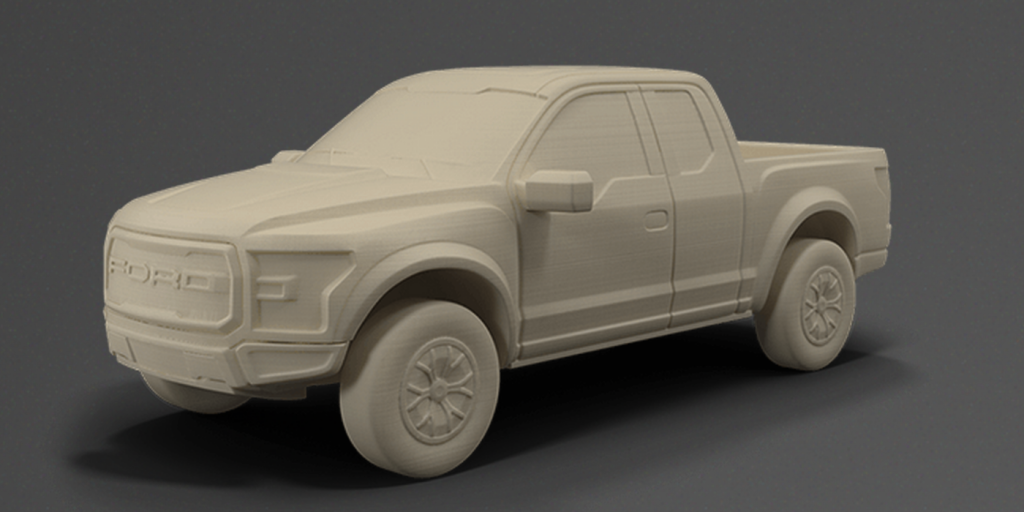 Source: formlabs.com
Source: formlabs.com
3. Tool making
Various devices help to facilitate and speed up the production and assembly processes, improve the safety of workers. Automotive factories and component suppliers use a large number of non-standard tooling that is specifically designed and optimized for end use. As a result, a lot of non-standard equipment and tools are made, which increases production costs.
This 3D protective wheel disc was purchased for 800 euros but can now be printed for just 21 euros. Tool development time has been reduced from 56 to 10 days.
Source: ultimaker.com
Delegating custom tooling and fixtures to service providers who machine parts from solid metal or plastic stock can delay production by weeks.
For example, the development and prototype of a commutator motor using traditional manufacturing methods can take up to four months and cost about half a million dollars.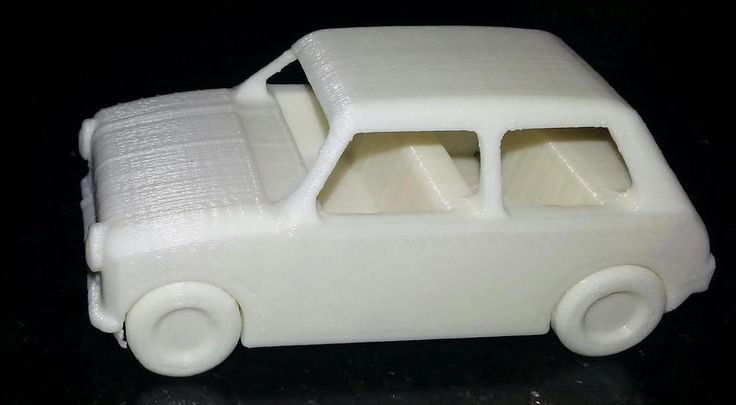 Thanks to 3D printing, Ford was able to develop several variants in just 4 days and 99.4% cheaper - only $3,000.
Thanks to 3D printing, Ford was able to develop several variants in just 4 days and 99.4% cheaper - only $3,000.
Source: youtube.com
Additive technologies allow you to complete the task in a few hours and significantly reduce costs compared to ordering from a third-party enterprise. Since increasing the complexity of a 3D printed model does not incur additional costs, products can be better optimized for their application. New elastic materials for 3D printing in many cases allow you to print plastic parts instead of metal or create prototypes on a 3D printer to test the tool before using it in production
Gradually, the production of 3D printed accessories and tools is becoming one of the largest applications of additive technologies.
Pankl Racing Systems uses 3D printed fixtures to fasten workpieces to a conveyor belt. Source: formlabs.com
For example, Pankl Racing Systems uses a stack of multiple Formlabs SLA 3D printers to make critical manufacturing tools. The multi-stage production of parts for transmissions on automatic lathes requires a series of fixtures and tools designed for each specific part.
The multi-stage production of parts for transmissions on automatic lathes requires a series of fixtures and tools designed for each specific part.
With the help of 3D printing, Pankl's engineers have reduced the production time for the aids by 90%, from 2-3 weeks to around 20 hours. Costs were also reduced by 80-90%, saving $150,000.
The transition to 3D printing has enabled Volkswagen Autoeuropa to cut tooling development costs by 91% and cut tooling times by 95%.
4. Troubleshooting spare parts
Spare parts have always been a problem for the automotive industry. The demand for them is either there or not, so the production of spare parts is not economically viable, and the storage of pre-fabricated replacement components is also costly. But if there are no repair parts available, difficulties arise and the main product becomes less valuable.
3D printing could solve the problem of parts in the automotive industry in many ways.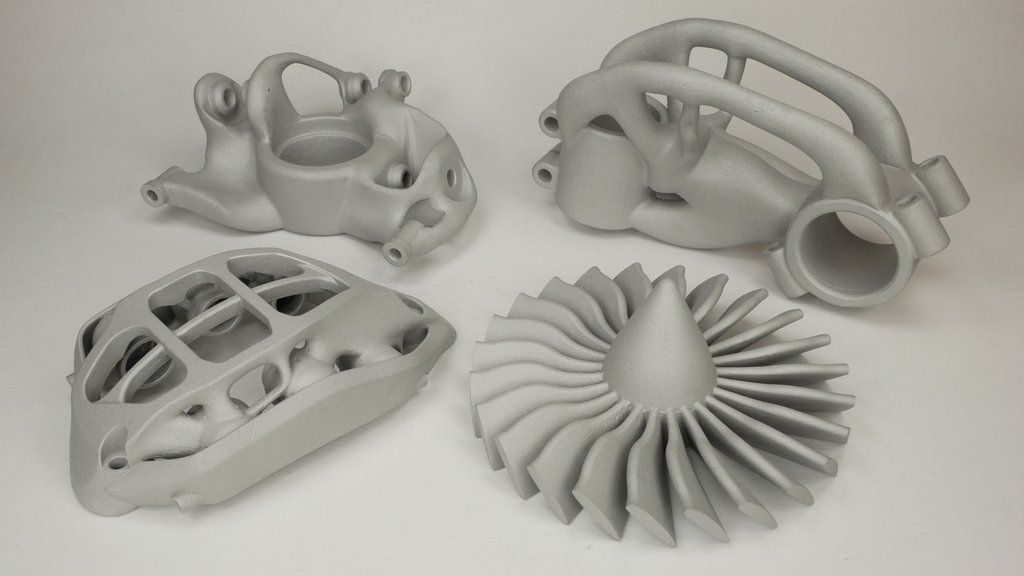 The main factors are printed materials, which can match the characteristics of traditional materials used in parts and be cost-effective. There are prerequisites for this.
The main factors are printed materials, which can match the characteristics of traditional materials used in parts and be cost-effective. There are prerequisites for this.
Using computer-aided design, drawings of all parts can be stored digitally, so there is no need to store the parts themselves. The parts needed by the client can be printed on a 3D printer right in the workshop.
Even obsolete parts whose blueprints have not survived can in principle be recreated by making a 3D scan of existing parts of this type and applying reverse engineering (reverse engineering). You can read more about this on our blog. Old projects can take on new life. There are many lovers of vintage cars, with the help of 3D printing it would be possible to create parts for them.
Ringbrother 3D printed the Cadillac emblem for a custom built old car. Source: formlabs.com
5. Production of standard parts
As 3D printers and materials for 3D printing become more affordable, a gradual transition to the production of mass-produced automotive parts using additive technologies is possible.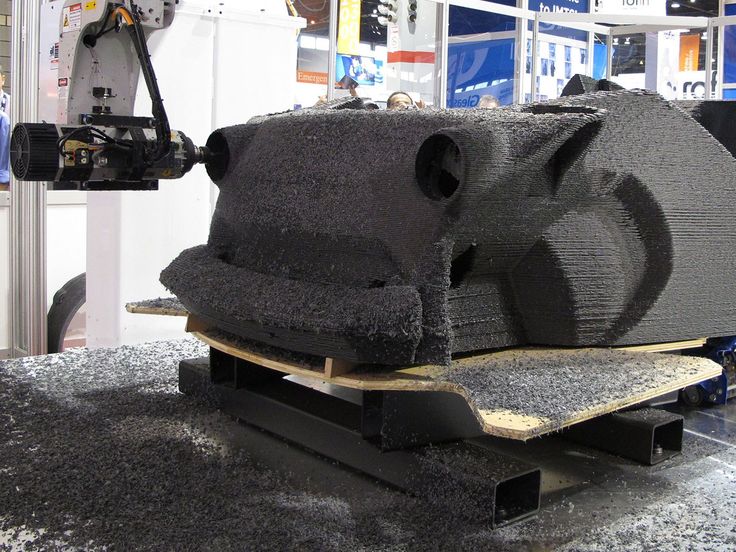
3D printing makes it possible to combine components into a single whole. Let's say there is a mechanism assembled from six or seven car parts that can be combined into one printed part. It will save time and assembly costs. With 3D printing, it is also possible to reduce the weight of the combined assembly, as a result, the car will use fuel more efficiently.
3D Systems has designed an advanced exhaust pipe for a sport bike. In the image below, you will see 20 sheet metal and hydroformed parts needed to assemble the original exhaust pipe. On the right is a monolithic exhaust pipe that does not require assembly, made using metal 3D printing.
Source designnews.com
The 3D printed tube was produced using Grade23 titanium in just 23 hours, compared to three weeks for traditional production. Design development time reduced from 6 weeks to 6 days. Additive manufacturing also eliminates the need for tooling, fixtures, multiple welding and multiple inspections.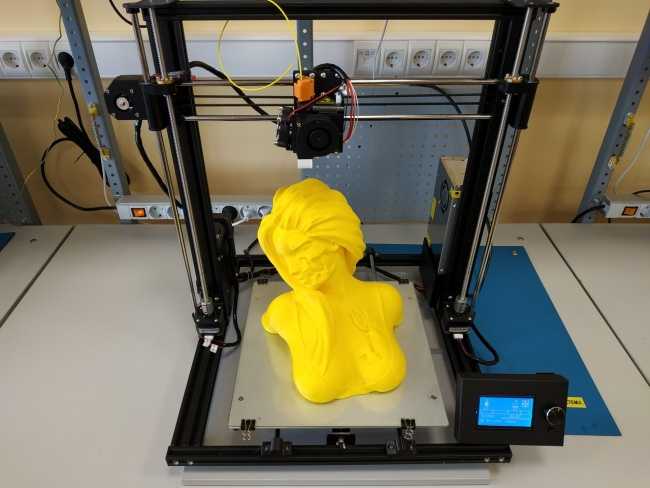
Geometry optimization has reduced the amount of material needed for maximum productivity. All elements of the original exhaust pipe are incorporated into the new design and, when printed with a typical wall thickness of 0.5mm, the 3D printed exhaust pipe is about 25% lighter than the original one.
A wide range of 3D printing materials is starting to meet the requirements of various vehicle components. Since additive methods reduce costs compared to traditional methods (such as molding and injection molding), it makes a lot of sense from a production and financial point of view to further introduce 3D printing into the production of basic parts.
Volkswagen, one of the world's largest and most innovative car manufacturers, is using an HP Metal Jet 3D printer to produce high-performance functional parts with special design requirements, such as shift knobs and mirror mounts. Volkswagen's long-term plans to work with HP include accelerating the production of mass-customized parts such as key rings and exterior nameplates.
Source: youtube.com
+1. 3D printed cars
While 3D-printed cars have yet to hit the market, there are some interesting designs and concepts that can suggest a possible direction for the automotive industry.
Light Cocoon . German engineering firm EDAG was clearly inspired by nature to create the 3D printed supporting structure of the Light Cocoon concept car. The frame resembles the veins of a tree leaf or its branch. Despite the fact that the design of the EDAG took less material than a conventional frame, all the strength requirements for structurally significant components are met. Outside, the case is covered with a lightweight and durable waterproof fabric.
The cover protects the EDAG Light Cocoon from bad weather and gives the car a unique personality. Source: formlabs.com
Blade . Blade ("Blade") announced as "the world's first 3D-printed supercar. " It meets supercar standards but is made from inexpensive materials: carbon fiber tubes and aluminum rods, combined with 3D printed metal parts. Blade turned out to be very light and does not take long to assemble.
" It meets supercar standards but is made from inexpensive materials: carbon fiber tubes and aluminum rods, combined with 3D printed metal parts. Blade turned out to be very light and does not take long to assemble.
The world's first 3D printed Blade supercar. Source: formlabs.com
Strati . The American company Local Motors 3D printed and assembled the Strati electric car right at the exhibition stand, in just 44 hours. Most of the components were printed - the body, seats, interior parts. A car is made up of less than 50 assemblies, far fewer than the thousands of parts that go into a traditional car. The company intends to reduce the print time to 10 hours.
The Strati from Local Motors consists of less than 50 individual parts*. Source: formlabs.com
LSEV. Developed by the Italian company XEV, the LSEV could be the first in the 3D printed electric vehicle market when it goes on sale. The 3D printed chassis, seats, windshield and all visible parts of the LSEV. Thanks to the active use of 3D printing, the number of components was reduced from 2000 to just 57, resulting in a very lightweight design. The electric car weighs only 450 kg.
Thanks to the active use of 3D printing, the number of components was reduced from 2000 to just 57, resulting in a very lightweight design. The electric car weighs only 450 kg.
The LSEV is the first 3D printed electric vehicle to hit the market in 2020. Source: formlabs.com
While most of these and many other 3D printed car projects remain at the concept stage, the extent to which 3D printing has penetrated various areas of the automotive industry is striking. In some cases, additive technologies provide new opportunities for design and production, in others they reduce production costs and save time.
See also:
3D printer and CNC race car making
3D scanning of cars in tuning and repair
5 ways 3D printing is changing the automotive industry
Photo source .com
An article from formlabs.com adapted and supplemented for you by Top 3D Shop.
You can't buy a fully 3D printed car at a car dealership yet, but additive technologies have been used in car design for many years. Every year, especially in recent years, 3D printing is taking an increasingly important place at all stages of production. This is evidenced by the rapid growth of 3D printing market share in automotive manufacturing, which is projected to reach $2.5 billion by 2023.
Every year, especially in recent years, 3D printing is taking an increasingly important place at all stages of production. This is evidenced by the rapid growth of 3D printing market share in automotive manufacturing, which is projected to reach $2.5 billion by 2023.
For example, luxury car companies including Bentley, Porsche, BMW and Ferrari are using 3D printing to create custom car interior parts. GM, Volvo, Ford are using 3D printing to produce tooling to save money, improve designs and reduce delivery times.
Source 3dprinting.com
3D printing is constantly emerging new opportunities, it is becoming more accessible. If the first 3D printers cost about $20,000, now you can find 3D equipment for $100. Now companies can, with the help of additive technologies, produce the necessary components directly at their own enterprises and not depend on suppliers.
With new materials, 3D printers can print high-precision, functional end parts. Additive technologies facilitate the production of custom products and increase productivity.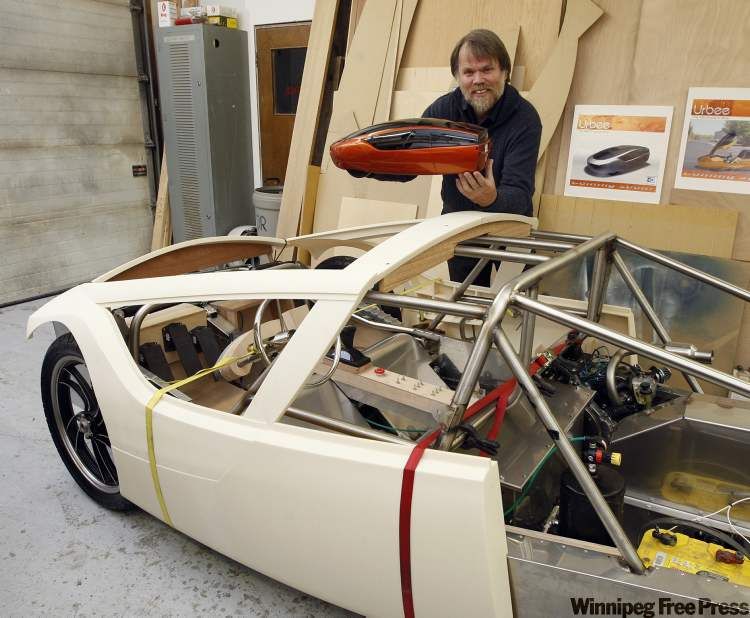
But this is only the beginning of the journey. Here are five key ways 3D printing is driving innovation in the automotive industry, from car design to production. Plus one bonus.
1. Changing the prototyping process
It was with the production of prototypes that the use of 3D printers in the automotive industry began. 3D printed prototypes took much less time than traditional methods required.
Using Raise3D 3D printers and ideaMaker software, Crazy Grandpa Garage was able to automate the process of creating custom car parts. Production costs have been reduced by 50%, design reliability has improved significantly, and lead time has been reduced by 83%. The parts now come out very well fitted to the car.
Source: facebo ok.com
Using 3D printing, car designers can quickly prototype individual parts or assemblies, from interior detail to dashboard, or even full-size car models. Thanks to 3D prototyping, the initial idea quickly turns into a physical embodiment of the concept - a conceptual model. The concept can then be developed into full-featured, high-fidelity prototypes, and after several validation steps, mass production begins. For the automotive industry, getting through these steps quickly is vital, and the entire downtime of an automobile production line in just an hour is very costly for the company.
The concept can then be developed into full-featured, high-fidelity prototypes, and after several validation steps, mass production begins. For the automotive industry, getting through these steps quickly is vital, and the entire downtime of an automobile production line in just an hour is very costly for the company.
For example, the assembly plant of the US car manufacturer General Motors claims to have saved more than $300,000 by purchasing a 3D printer in 2016.
Ringbrothers designers and engineers are not dependent on third parties to implement laser stereolithography (SLA) in their facility. The cost is reduced, the development time is reduced. Source: formlabs.com
Tailpipes for BMW M4 by Eventuri, Source: ultimaker.com
Traditional prototyping was time consuming and costly, in part because the product went through more iterations. With 3D printing, you can create high-quality prototypes in one day and at a much lower cost. More examples.
The Ford Fiesta ST with 3D printed parts, ext. SEMA 2016, ultimaker.com
For example, General Motors has partnered with Autodesk to produce low cost, lightweight automotive parts using 3D printers. Tools, fixtures and fittings can now be produced at a fraction of the cost, according to Autodesk. For example, a 3D printed tool used to align engine and transmission ID numbers costs less than $3 at General Motors. A traditionally produced instrument will cost $3,000. In addition, downtime due to faulty tools can be significantly reduced as new tools are produced in-house.
2. Creating custom and complex parts
Daihatsu, the oldest car manufacturer in Japan, launched a project in 2016 to customize its Copen model.
Source: 3dprint.com
In partnership with Stratasys, Daihatsu customers can design and order custom 3D printed panels for their front and rear bumpers, with a choice of over 15 basic patterns in 10 different colors.
Source: 3dprint.com
In Europe, the BMW MINI brand also uses 3D printing to create personalized car parts. Since the beginning of 2018, MINI customers have been able to personalize various trim elements such as the instrument panel, LED treadplates and illuminated bumpers, as well as choose from different colors and textures. These parts are then 3D printed using a range of technologies from DLS Carbon to SLS.
Source: formlabs.com
Volkswagen Motorsport's I.D. R Pikes Peak is designed with over 2000 3D printed test parts.
Source amfg.ai
The use of 3D printers makes it possible to experiment in the development of non-standard designs, reduces the cost of their production. Long production processes for custom-made products are becoming much shorter.
Ringbrothers uses 3D printing to create customized end pieces such as ventilation grilles. Source: formlabs.com
Large companies are merging 3D printing technologies with traditional manufacturing methods. Volkswagen has recreated its iconic 1962 Microbus by replacing the petrol engine with a 120 hp electric one. The Type 20 concept electric minivan has received many improvements using 3D printed parts. These improvements include cast aluminum wheels. Even the wheel hubcaps, while looking like stamped steel, are actually printed on a Formlabs SLA 3D printer, then electroplated and polished.
Volkswagen has recreated its iconic 1962 Microbus by replacing the petrol engine with a 120 hp electric one. The Type 20 concept electric minivan has received many improvements using 3D printed parts. These improvements include cast aluminum wheels. Even the wheel hubcaps, while looking like stamped steel, are actually printed on a Formlabs SLA 3D printer, then electroplated and polished.
Source: formlabs.com
Formlabs Form 2 SLA Specifications
Source: top3dshop.ru
The Bentley Speed 6 is another example. Bentley has used cutting-edge metal 3D printer technology to produce a grille, side vents, door handles and exhaust pipes much more complex than those used on current production models.
Bentley used metal 3D printing to create intricate micron precision parts. Source: formlabs.com
Bugatti's monoblock brake caliper is a prime example. For some components, Bugatti would have preferred titanium due to its high performance, but processing this metal with traditional methods is expensive and difficult. 3D printing has allowed Bugatti to produce a titanium alloy brake caliper. Due to the thin walls, the caliper turned out to be very light - almost two times lighter than forged aluminum. At the same time, the strength of the 3D-printed monoblock is superior to that of aluminum. The 3D printed titanium monoblock has a tensile strength of 1250 N/mm2. This means that a force of just over 125 kg will be applied per square millimeter of this titanium alloy without tearing the material. The new titanium caliper is 41 cm long, 21 cm wide and 13.6 cm high and weighs only 2.9kg compared to currently used aluminum, which weighs 4.9 kg.
For some components, Bugatti would have preferred titanium due to its high performance, but processing this metal with traditional methods is expensive and difficult. 3D printing has allowed Bugatti to produce a titanium alloy brake caliper. Due to the thin walls, the caliper turned out to be very light - almost two times lighter than forged aluminum. At the same time, the strength of the 3D-printed monoblock is superior to that of aluminum. The 3D printed titanium monoblock has a tensile strength of 1250 N/mm2. This means that a force of just over 125 kg will be applied per square millimeter of this titanium alloy without tearing the material. The new titanium caliper is 41 cm long, 21 cm wide and 13.6 cm high and weighs only 2.9kg compared to currently used aluminum, which weighs 4.9 kg.
The Bugatti Brake Monobloc is the industry's largest functional 3D printed titanium vehicle component. Source: formlabs.com
Source: formlabs.com
3. Tool and fixture making
A variety of fixtures help make manufacturing and assembly processes easier and faster, and improve worker safety. Automotive factories and component suppliers use a large number of non-standard tooling that is specifically designed and optimized for end use. As a result, a lot of non-standard equipment and tools are made, which increases production costs.
This 3D protective wheel disc was purchased for 800 euros but can now be printed for just 21 euros. Tool development time has been reduced from 56 to 10 days.
Source: ultimaker.com
Delegating custom tooling and fixtures to service providers who machine parts from solid metal or plastic stock can delay production by weeks.
For example, the development and prototype of a commutator motor using traditional manufacturing methods can take up to four months and cost about half a million dollars. Thanks to 3D printing, Ford was able to develop several variants in just 4 days and 99.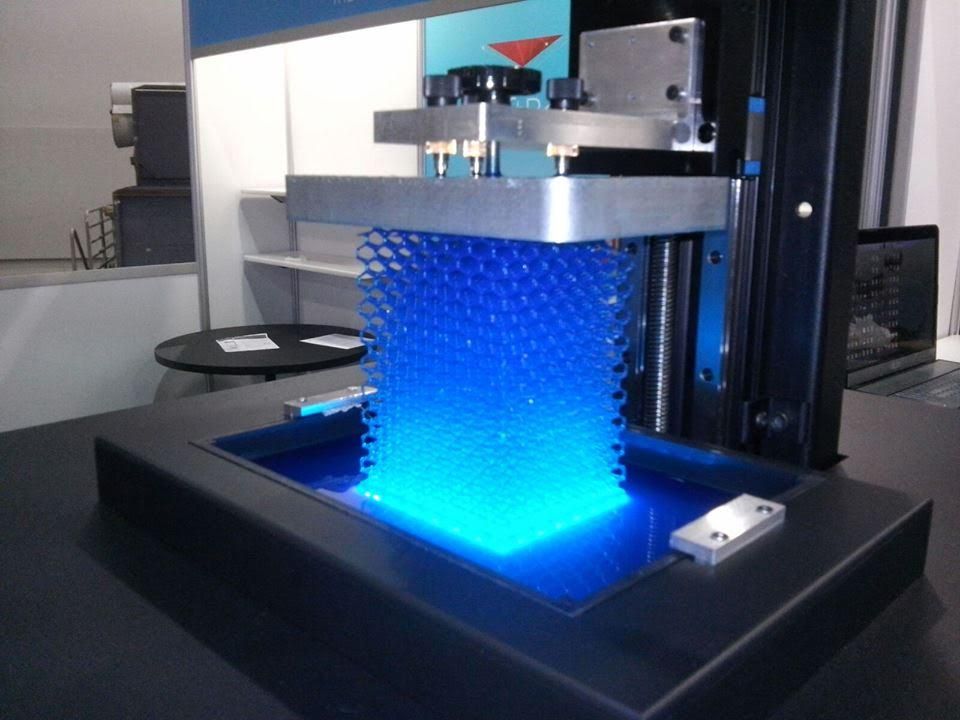 4% cheaper - only $3,000.
4% cheaper - only $3,000.
Additive technologies allow you to complete the task in a few hours and significantly reduce costs compared to ordering from a third-party enterprise. Since increasing the complexity of a 3D printed model does not incur additional costs, products can be better optimized for their application. New elastic materials for 3D printing in many cases allow you to print plastic parts instead of metal or create prototypes on a 3D printer to test the tool before using it in production.
Gradually, the production of 3D printed accessories and tools is becoming one of the largest applications of additive technologies.
Pankl Racing Systems uses 3D printed fixtures to fasten workpieces to a conveyor belt. Source: formlabs.com
For example, Pankl Racing Systems uses a stack of multiple Formlabs SLA 3D printers to make critical manufacturing tools. The multi-stage production of parts for transmissions on automatic lathes requires a series of fixtures and tools designed for each specific part.
The multi-stage production of parts for transmissions on automatic lathes requires a series of fixtures and tools designed for each specific part.
With the help of 3D printing, Pankl's engineers have reduced the production time for the aids by 90%, from 2-3 weeks to around 20 hours. Costs were also reduced by 80-90%, saving $150,000.
The transition to 3D printing has enabled Volkswagen Autoeuropa to cut tooling development costs by 91% and cut tooling times by 95%.
4. Solving problems with spare parts
Spare parts have always been a problem for the automotive industry. The demand for them is either there or not, so the production of spare parts is not economically viable, and the storage of pre-fabricated replacement components is also costly. But if there are no repair parts available, difficulties arise and the main product becomes less valuable.
3D printing could solve the problem of parts in the automotive industry in many ways.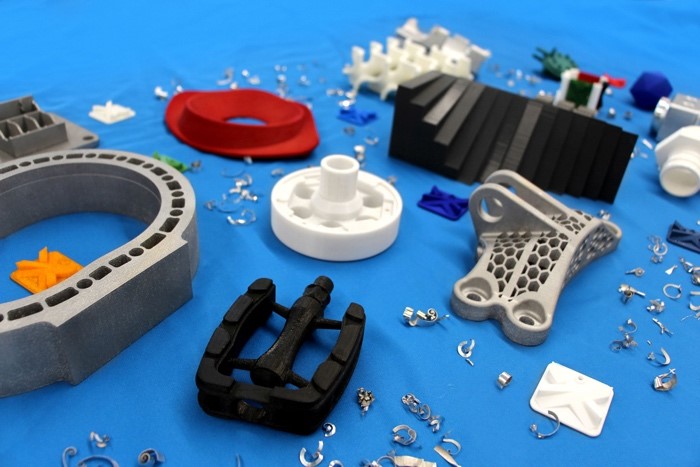 The main factors are printed materials, which can match the characteristics of traditional materials used in parts and be cost-effective. There are prerequisites for this.
The main factors are printed materials, which can match the characteristics of traditional materials used in parts and be cost-effective. There are prerequisites for this.
Using computer-aided design, drawings of all parts can be stored digitally, so there is no need to store the parts themselves. The parts needed by the client can be printed on a 3D printer right in the workshop.
Even obsolete parts whose blueprints have not survived can in principle be recreated by making a 3D scan of existing parts of this type and applying reverse engineering (reverse engineering). You can read more about this on our blog. Old projects can take on new life. There are many lovers of vintage cars, with the help of 3D printing it would be possible to create parts for them.
Ringbrother 3D printed the Cadillac emblem for a custom built old car. Source: formlabs.com
5. Production of standard parts
As 3D printers and materials for 3D printing become more affordable, a gradual transition to the production of mass-produced automotive parts using additive technologies is possible.
3D printing makes it possible to combine components into a single whole. Let's say there is a mechanism assembled from six or seven car parts that can be combined into one printed part. It will save time and assembly costs. With 3D printing, it is also possible to reduce the weight of the combined assembly, as a result, the car will use fuel more efficiently.
3D Systems has designed an advanced exhaust pipe for a sport bike. In the image below, you will see 20 sheet metal and hydroformed parts needed to assemble the original exhaust pipe. On the right is a monolithic exhaust pipe that does not require assembly, made using metal 3D printing.
Source: designnews.com
3D printed tube produced using Grade23 titanium in just 23 hours, it would take three weeks for traditional production. Design development time reduced from 6 weeks to 6 days. Additive manufacturing also eliminates the need for tooling, fixtures, multiple welding and multiple inspections.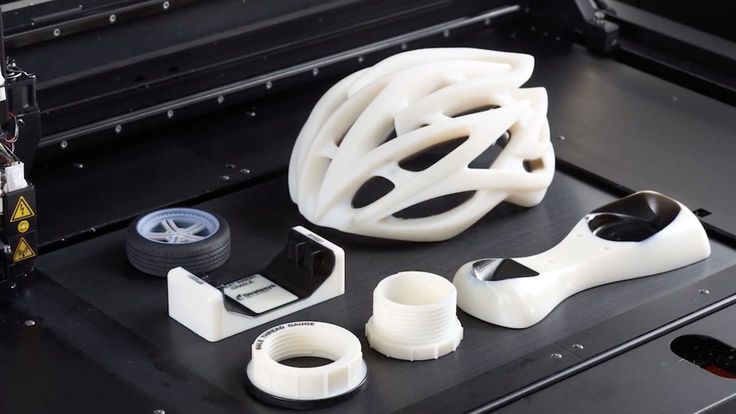
Geometry optimization has reduced the amount of material needed for maximum productivity. All elements of the original exhaust pipe are incorporated into the new design and, when printed with a typical wall thickness of 0.5mm, the 3D printed exhaust pipe is about 25% lighter than the original one.
A wide range of 3D printing materials is starting to meet the requirements of various vehicle components. Since additive methods reduce costs compared to traditional methods (such as molding and injection molding), it makes a lot of sense from a production and financial point of view to further introduce 3D printing into the production of basic parts.
Volkswagen, one of the world's largest and most innovative car manufacturers, is using an HP Metal Jet 3D printer to produce high-performance functional parts with special design requirements, such as shift knobs and mirror mounts. Volkswagen's long-term plans to work with HP include accelerating the production of mass-customized parts such as key rings and exterior nameplates.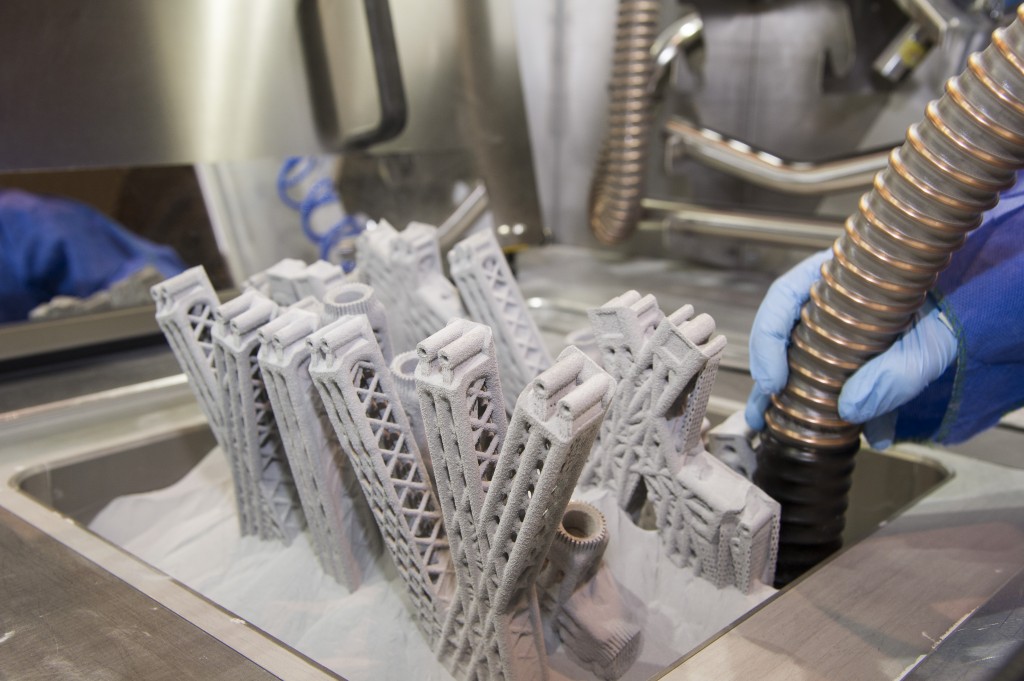
+1. 3D Printed Cars
Although complete 3D printed cars have not hit the market yet, some interesting designs and concepts suggest a possible direction for the automotive industry.
Light Cocoon. German engineering firm EDAG was clearly inspired by nature to 3D print the supporting structure of the Light Cocoon concept car. The frame resembles the veins of a tree leaf or its branch. Despite the fact that the design of the EDAG took less material than a conventional frame, all the strength requirements for structurally significant components are met. Outside, the case is covered with a lightweight and durable waterproof fabric.
The cover protects the EDAG Light Cocoon from bad weather and gives the car a unique personality. Source: formlabs.com
Blade . Blade ("Blade") announced as "the world's first 3D-printed supercar.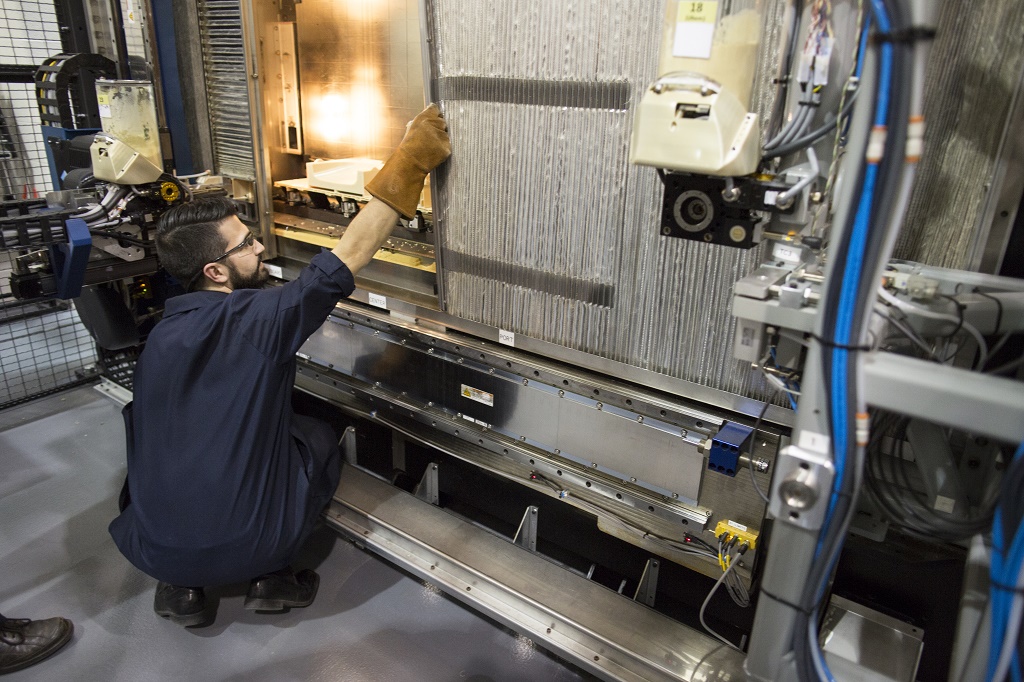 " It meets supercar standards but is made from inexpensive materials: carbon fiber tubes and aluminum rods, combined with 3D printed metal parts. Blade turned out to be very light and does not take long to assemble.
" It meets supercar standards but is made from inexpensive materials: carbon fiber tubes and aluminum rods, combined with 3D printed metal parts. Blade turned out to be very light and does not take long to assemble.
The world's first 3D printed Blade supercar. Source: formlabs.com
Strati . The American company Local Motors 3D printed and assembled the Strati electric car right at the exhibition stand, in just 44 hours. Most of the components were printed - the body, seats, interior parts. A car is made up of less than 50 assemblies, far fewer than the thousands of parts that go into a traditional car. The company intends to reduce the print time to 10 hours.
The Local Motors Strati consists of less than 50 individual parts*. Source: formlabs.com
LSEV . Developed by the Italian company XEV, the LSEV could be the first in the 3D printed electric vehicle market when it goes on sale. The 3D printed chassis, seats, windshield and all visible parts of the LSEV.